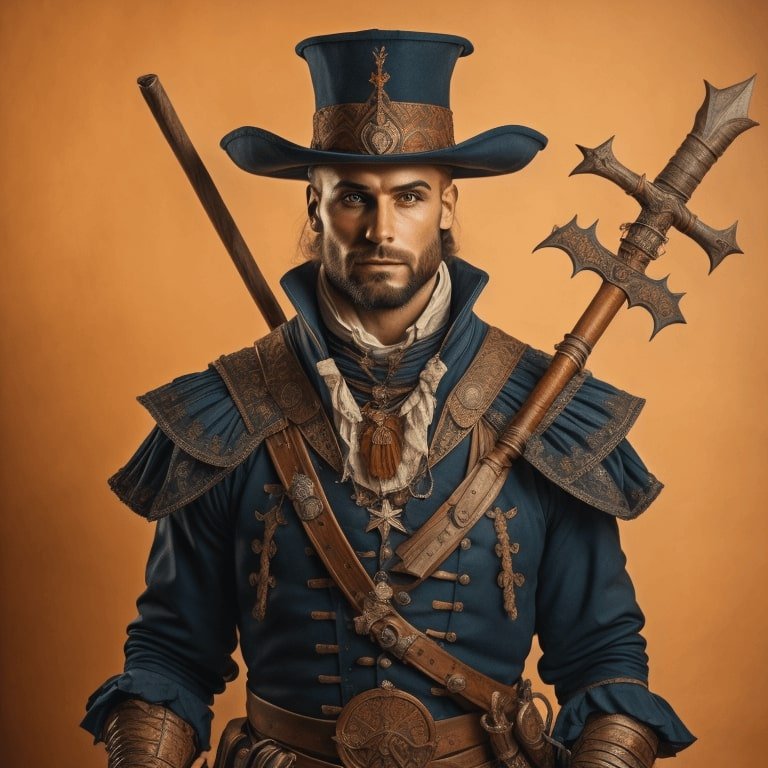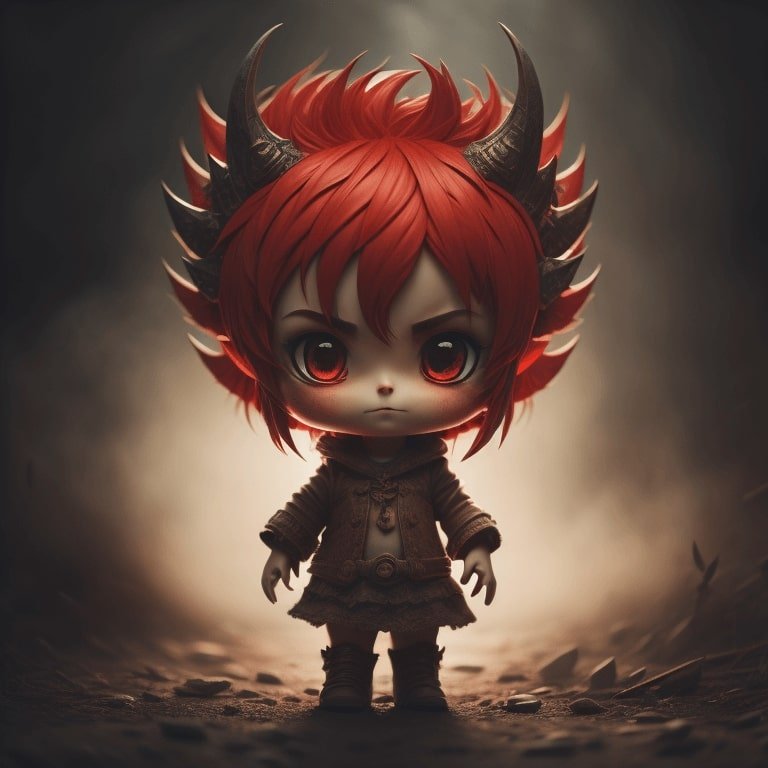Croatia has rich folklore stories and is full of mythical creatures that will likely blow your mind.
In my spare time, I like to research local tales, legends, and anecdotes and by spending my whole life in Croatia I have read about and heard so many interesting tales I must share with you.
You’ll see that Croatian folklore stories have a strong connection with the rest of Slavic mythology and that Croatia is the country where many myths originated from.
Štriga (Copernica)

Štriga (also called copernica in the area around Zagreb), is the Croatian witch that populated Croatian lands prior to medieval times and all the way to modern times.
Some say that štrigas still live among us today, but they have to be careful so that society doesn’t figure them out.
I personally met more women who claimed to be of the witches’ ancestry, yet never witnessed any of them fly home on a broom.
I mean, if they really were who they claimed to be, I wonder why would they spend money on a taxi after a night out.
Anyways, Štriga was known for their classic witches’ abilities such as flying on a broom, casting spells, dancing with the devil, and more.
I remember the stories my mother told me about the recent witches’ meetings on the hill of Klek, 30 minutes away from Rijeka that used to be a thing 40 years ago.
According to the legend, the last witch in Europe was persecuted in Croatia, more precisely at Kastav, 10 minutes from Rijeka by car.
Vampir

While vampir (eng. vampire) is the most common creature of the night and some may find them boring due to numerous movies that made this creature cliché, there’s something special about Croatian vampires.
It’s believed that the very first vampire ever mentioned in the historical records was Jure Grando, the Croatian vampire!
Jure Grando lived in the 16th century in Istria and was a real person who was believed to be turned into a vampire, or as they called all notorious demon-like humans, the štrigun.
Jure terrorized the locals in his village of Kringa, 20 kilometers away from Poreč, and Rovinj, until one day when the villagers finally cut his head off and got rid of him in a classic vampire hunter way.
What did Jure do to turn the village into a horror scene? Well, it is said that he would terrorize his widow by hunting here during the night, knocking on villagers’ doors, and having something to do with their sudden death a few days afterward.
The numerous eyewitnesses, including the local priest who tried to personally stop Jure by puncturing his hearth with a stake, yet unusefully, preserved the story for generations to come.
This is likely how the stories of vampires later spread around Europe.
Krsnik

Krsnik is a vampire hunter born into this world as the chosen one.
Not everybody could be krsnik, as it was a special breed of people with supernatural powers given by the Lord above.
Krsnik took on its duty of serving mankind from a young age, as they could be recognized at birth when a baby is born with a placenta on its head. Some other sources also mention that a 10th baby born into a family could become a krsnik.
While krsnik was usually a man, there were cases of women born into this holy role in history.
According to the sources we have, to be a krsnik it was super-rare and there were only a few krsnik’s per each region of Croatia.
Superpowers? Krsnik could turn himself into an animal such as a white dog, could fly, and had supernatural blessings in a fight against evil creatures he would fight during the night.
There are documented stories of battles between werewolves and krsnik’s at crossroads in Istria, but the arch-enemy of every krsnik was štriga or štrigun (witch or warlock).
What I found interesting is that the difference between krsnik and štriga at birth was lesser than we’d think.
While krsnik would be born with a white or red placenta overhead, štriga would be born with the dark one.
Later, after the birth, some traditions mention the importance of a ritual where the midwife would have a responsibility to publicly proclaim that the baby was born either as a krsnik or štriga (štrigun).
If such a fact would be hidden from others, even a krsnik could fall into the darkness later in life as they would grow up, and it would be too late to break the curse which would later turn the child into a štriga or štrigun.
Basilisk

Basilisk, often mistaken for a dragon or a wyvern is a creature with the body of a dragon, the head of a roaster, and the tail of a snake.
There’s a legend of a basilisk that protected Rijeka from the enemies including a giant octopus who terrorized the citizens in the town.
There are many stories of great serpents that existed even before the old Greece and that’s where I believe Basilisk came from into Slavic mythology.
In Slavic mythology, basilisks are king serpents so dangerous that a stare into their eyes means a certain death.
This reminds me of Greek Medusa stories where she turns everyone into a stone after eye contact.
Mora

Have you ever experienced sleep paralysis? If you have, the chances are that you were visited by Mora.
Mora which translates to English nightmare, is a demon and a creature of the night of which many tales were spoken about in Croatia.
Mora comes as a nightmare (succubus or incubus) when a person falls asleep, evokes uncomfortable dreams in the affected, and eventually gets on top of their chest and proceeds to strangle them.
Sounds like sleep paralysis, right? It’s common for people with sleep paralysis to describe the experience precisely this way and most of them also envision a scary, demon-looking creature that puts weight on their chests while they are unable to get up.
It is said that Mora can enter the room through the keyhole, so some methods of protection from the 19th century included leaving a broom upside down behind their doors.
Probably the best method of protection against Mora was to recite prayers before going to sleep.
Tintilinić (Malik)

Tintilinic is a demon or a tragically murdered non-baptized child who manifests as a young troublesome child.
Tintilinic is not necessarily evil in a traditional sense, but rather a small trickster and a joker who likes to fool adults and pull shenanigans.
Although they can be overwhelming and annoying, some can grow dear to a heart.
Thus, there’s a saying in Croatia for young children who misbehave, “pravi si tintilinić” or in English you are such a tintilinić.
Tintilinić (in other regions of Croatia also known as Malik, Masmalić, Macmolić, Maličić, Macić, and Mačić) is not found in any other Slavic mythology, so it’s considered to be of Roman origins.
There are some mentions of this little demon in the scriptures of old Rome, and due to close proximity to Italy, it is said that these beliefs got implanted into Croatian folk when Croats populated the region in the 7th century.
Masmalić

Masmalić is a little gnome-like creature that populates Cres, the second-biggest Croatian island near Rijeka.
Masmalić is a friendly creature as long as it is respected, but once disturbed it can try to get its revenge!
These little humans can be recognized by their little blue pants and red shirts and they live inside caves, and in holes in trees and logs.
Essentially their role is to protect nature and to live in synergy with it, so it’s important that humans don’t disturb their peace by destroying nature and throwing trash in it.
Masmalić doesn’t have any superpowers besides being tiny and isn’t associated with horror stories, and they are very similar to dwarfs in European myths and legends.
Perhaps one superpower they could have from what I have heard from some people is invisibility, but I can’t be sure of it because I have never seen them disappear in front of my eyes.
Vila
Vila (eng. fairy) is often depicted as a small female humanoid with wings, and sometimes as a spheric entity that emits light or even a half-human, half-fish woman which is also known as a siren in foreign mythologies.
Let’s begin with normal, cute fairies called vila.
They are usually depicted as positive, friendly, intelligent small female humanoids who fly and are more curious than cats.
For instance, in Mažuranić’s Regoč, vila Kosjenka lures giant Regoč into an adventure.
While these faires are portrayed in happy family-friendly stories, not all faires are good.
For instance, there are numerous stories of villagers bumping into evil spirits in forests, especially near lakes or deep in darker forested areas.
Rusalka

The siren-looking vila is also known as rusalka and they are known as the water fairies with beautiful faces and long, golden hair.
Rusalka was proud of her beautiful fishtail, outstanding body, and face that every man would find attractive.
While in Croatia, a rusalka is usually depicted as a positive, friendly, and happy creature who would spend time by the rivers and lakes singing and dancing and even aiding heroes in battles, in easter europe they were depicted as cold-hearted killers more fitting of classic sirens who’d charm sailors into a murder.
I also found some myths where rusalka is described as an evil fairy (siren) created due to a drowning of a young woman or pagan female children.
These rusalkas are evil and want to lure others into their own demise, so we can conclude that just like humans, there were both good and evil fairies.
Div

Div (eng. giant) is a prominent creature that played a big role in Croatian mythology and literature.
It’s interesting that giants in Croatian folklore are always depicted as friendly, at least from what I have researched and understood throughout my life.
The most famous giants are mentioned in Ivana Brlić Mažuranić’s and Vladimir Nazor’s literature.
These authors depicted the old tales of giants that lived in the lands of Croatia even prior to the spread of Christianity.
Naxor’s div Veli Joža used to live among other giants in Istria, Croatia among people.
While giants are described as non-intelligent, simple-minded, yet friendly creatures, in Nazor’s tales humans play the role of corrupted, ill creatures who are determined to have control in their hands and want to enslave the giants.
Veli Joža fights for the freedom of his kind and eventually manages to become free.
In Mažuranic’s Regoč, the friendly giant Regoč is also described as a simple-minded, but lazy giant who lives a boring life in the mountains.
One day, he meets vila (fairy) Kosjenka, and then his adventure begins when he figures out there’s more to life than what he used to live.
Once again, Regoč giant is very helpful and saves the lives of people by using his size and inhuman strength to help them survive the flood by blocking the water wave with his body.
We can conclude that in Croatian folklore, giants lived among humans and were either respected and beloved or sometimes taken for granted and enslaved to fit the human’s ill desires for control.
Poor giants.
Final take
I hope you liked some of these mythical creatures and creatures of the night which are deeply rooted in Croatian folklore stories.
I’ll try to find more interesting stories, and perhaps create video content about interesting legends and myths of Croatia, so don’t forget to come back to this blog sometime later!
If you have any questions or requests, you can also contact me via e-mail.
